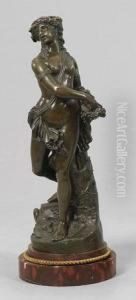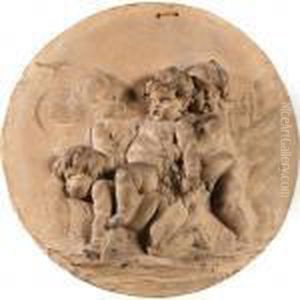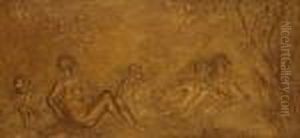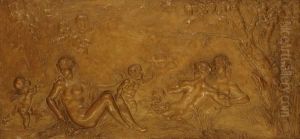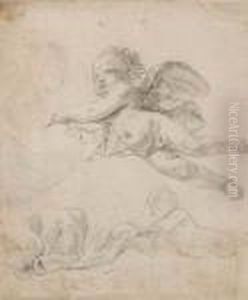Clodion Paintings
Claude Michel, known as Clodion, was a French sculptor born in Nancy on December 20, 1738. He is particularly renowned for his small-scale terracotta sculptures in the Rococo style, which was characterized by elaborate ornamentation and a playful, light-hearted romanticism. Clodion's works are often typified by their dynamic movement and sensual, mythological themes.
Clodion was a part of a family with a rich artistic tradition; his uncle was the famous sculptor Lambert-Sigisbert Adam. He moved to Paris and studied under his uncle and later under Jean-Baptiste Pigalle, another prominent sculptor of the time. He won the prestigious Prix de Rome in 1759, which allowed him to study at the French Academy in Rome until 1767. During his time in Italy, he was influenced by the ancient Roman sculpture and the works of Gian Lorenzo Bernini, among others.
Upon returning to Paris, Clodion struggled initially to win large-scale commissions. Instead, he focused on creating small decorative pieces for private clients. His works from this period show a playful and erotic energy and often depict bacchantes, satyrs, nymphs, and cherubs, evoking the hedonistic spirit of the ancient world. Some of his notable works include 'The Intoxication of Wine' and 'Satyr and Nymph.'
During the French Revolution, Clodion's aristocratic patronage declined, and he had to adapt to changing tastes and times. Despite the political turmoil, he continued to work and created some more monumental pieces, including stone sculptures for the city of Paris. After the Revolution, he also received commissions for public monuments, such as the terracotta relief 'The Triumph of Flora' for the Château de Fontainebleau.
Clodion continued to create art until his later years, and his style evolved over time, incorporating some Neoclassical elements while maintaining the fluidity and grace characteristic of his earlier works. He died on March 29, 1814, in Paris. Today, Clodion's works are held in high esteem and can be found in many major art museums around the world, including the Louvre in Paris and the Metropolitan Museum of Art in New York.
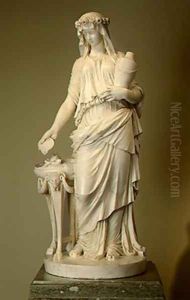
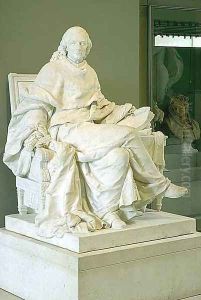
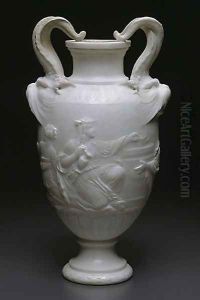
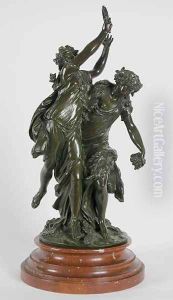
![Poetry and Music [detail #1]](https://www.niceartgallery.com/imgs/142148/s/clodion-poetry-and-music-detail-1-cf3a9731.jpg)
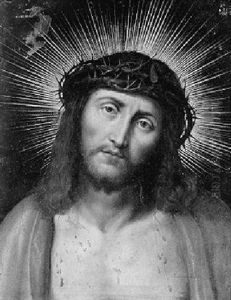
![Poetry and Music [detail #2]](https://www.niceartgallery.com/imgs/142154/s/clodion-poetry-and-music-detail-2-4a94bc10.jpg)
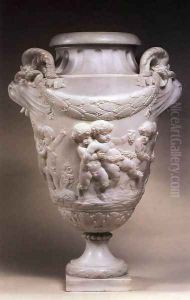
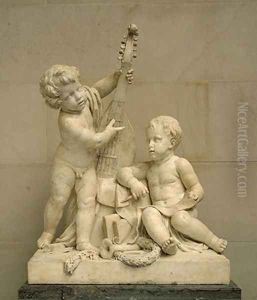
![Vestal [detail #2]](https://www.niceartgallery.com/imgs/142149/s/clodion-vestal-detail-2-18d81769.jpg)
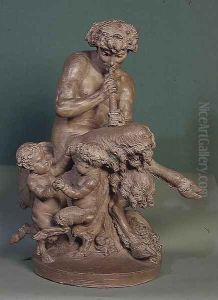
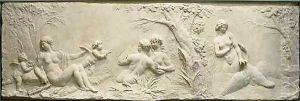
![Vestal [detail #1]](https://www.niceartgallery.com/imgs/142146/s/clodion-vestal-detail-1-5b4781a7.jpg)
